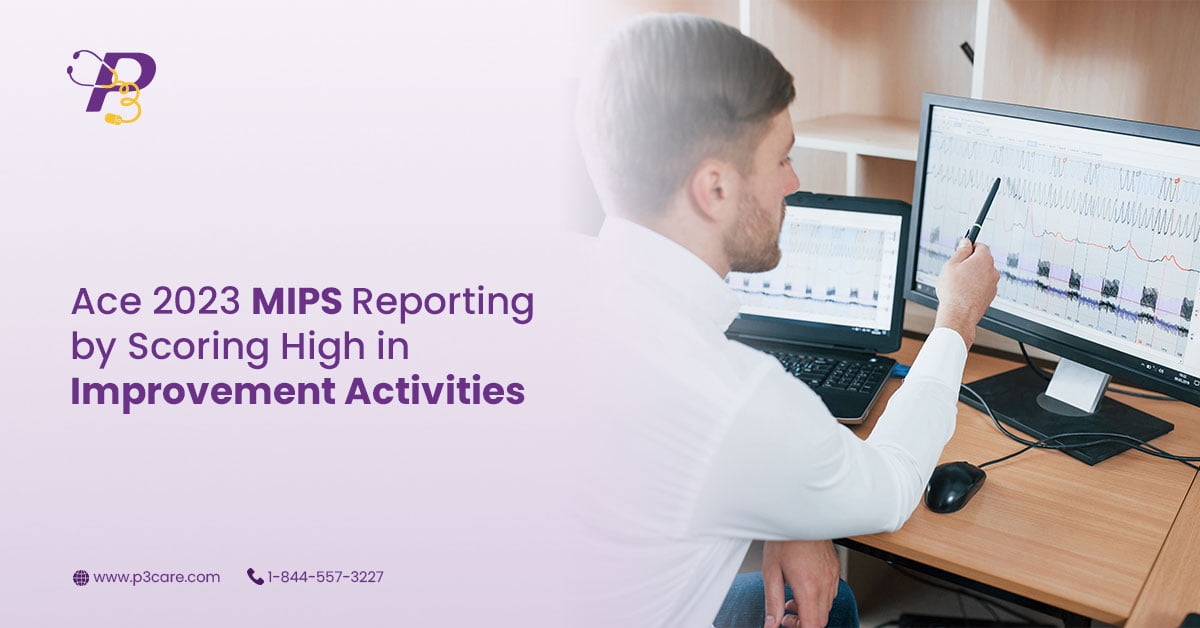

In the rapidly evolving healthcare landscape, providers haven’t settled for average care at any point. Rather, they are looking for opportunities to implement meaningful quality improvement activities. Here, the MIPS has not only served its purpose but also offered payment adjustments. Perform well, score higher (hit the performance threshold), and unlock a positive payment adjustment. Here, let us mention the payment adjustment rate for the 2023 MIPS program specifically. Well, it is more than what a provider can desire as a reward for their exceptional performance. It is up to 9%—the maximum payment adjustment rate—for MIPS reporting.
So, are you looking for the right ground to drive a positive change in your practice? Why not think about going outside the box and engaging in meaningful improvement activities? And as a MIPS consulting services provider, we can assure you that there is no better way to do this than through MIPS participation.
What now? Are you ready to showcase your devotion to taking quality care to the next level? MIPS 2023 gives you the right direction to get engaged in quality improvement activities. You can focus on areas that need more effort and work hard.
Let’s see what the PFS final rule for the 2023 MIPS program entails for improvement activities. And what is the rule for submitting the IAs for 2023 MIPS reporting?
Improvement activities are one of the four pillars of the MIPS program. It contributes 15% of the MIPS final score weightage. So, clinicians have to choose IAs following the guidelines already provided in the PFS final rule. For now, we have three approved combinations of improvement activities:
As per the rule for 2023 PY, the MIPS participants have a minimum of a 90-day performance period. Each activity fully describes all the details necessary for participants to become familiar with. The same 90-day period or other defined time frame is not required for multiple activities to be carried out.
There is another point that you need to focus on here. We have a rule specified for groups, virtual groups, and APM entities. For the attestation to an IA at least 50% of clinicians must perform the same activity. Furthermore, they have to do so during any continuous 90-day performance period in the same PY.
Like previous MIPS reporting years, QPP has again provided MIPS participants with a diverse set of IA. All these activities align with the participants’ expertise. They may vary from clinical enhancement to patient involvement to population health management. By taking part in these activities, providers may advance their expertise and improve patient outcomes.
* Because it is now a MIPS requirement, participation in a QCDR is no longer eligible as an improvement activity. *
The 12-month reporting cycle and requirements mostly remained the same. However, CMS has decided to set a maximum cost improvement score of 1/100 percentage points for the cost performance category. It started with the 2022 performance period. So, MIPS 2023 did not include any sort of change to the cost.
Obtaining the maximum of 15 points for the Improvement Activities score entails the following:
Providers in healthcare are the most devoted people. They participate in MIPS reporting and report their Medicare Part B claim data to CMS. Not only do they get payment adjustments based on performance, but they also get feedback. These feedbacks help them speed up their efforts for better patient outcomes. Every category of MIPS reporting has its motives and goals. But MIPS quality improvement activities help you address your unique areas of focus and expertise. Overall, those who become a part of MIPS can demonstrate high levels of quality care and patient outcomes through MIPS.

